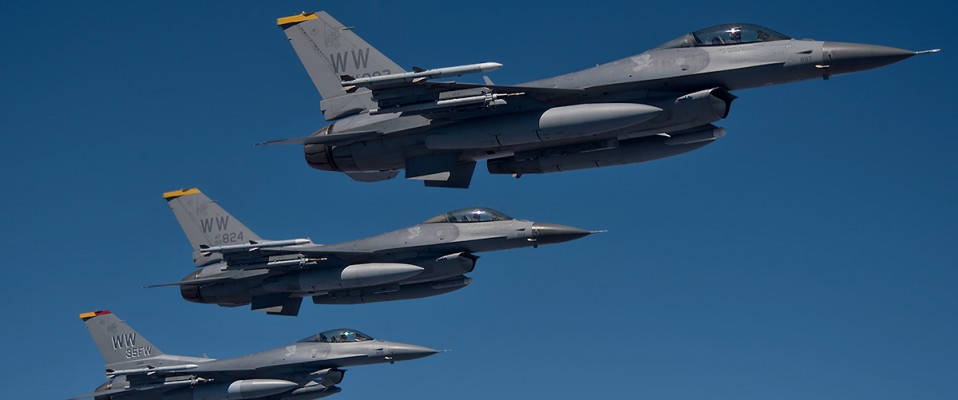Wild Weasels Down Under for Pitch Black 2016
Report by Jaryd Stock
Photos by William Nguyen Phuoc, Nathan Rundle and Jaryd Stock (unless noted)
August 25, 2016
The United States Air Force has played a major part in supporting Pitch Black exercises since its beginning back in 1983 and since then the USAF’s participation has been steadily increasing. Particularly since the “Pacific Shift” where President Obama stated back in 2011 that more United States military units would either be basing periodically or rotating through more and more on various exercises through Australia, and this year’s exercise was a case in point. Part of the USAF’s involvement for this year’s exercise were B-52’s from the 69th Bomb Squadron deploying daily sorties from Andersen Air Force Base in Guam on their Pacific deployment to the Delamere weapons range.
But apart from the B-52’s flying in and conducting strike missions over the Delamere, was a specialised unit that has been deployed to Japan since 1987 and has been forward deployed to Misawa Air Force Base which is situated around 425 miles north of Tokyo in the Aomori Prefecture.

The 14th Fighter Squadron nicknamed the ‘Samurais’ which is a part of the 35th Fighter Wing, under control of the United States Pacific Air Force’s, 5th Air Force. The 35th FW comprises of two full Squadrons of upgraded Block 40 and Block 50 F-16CM Vipers (Fighting Falcons) which are the 13th and 14th Fighter Squadrons respectively with 27 other separate support units which all call Misawa home. As works/resurfacing were conducted at Misawa AFB on the main runway, this was an opportune time for the 14th FS to deploy away from home and head down to Australia for the Pitch Black exercise. Beginning on July 12, the 13th Fighter Squadron nicknamed the ‘Panthers’ departed for exercise Cope Taufan held in Malaysia, with the Samurais heading to RAAF Base Darwin to participate in Australia’s premier aerial military exercise.
The 14th FS operating the upgraded F-16CM (previously known as the Block 40 F-16CG and Block 50 F-16CJ variants) built between 1990 and 1992, brought a unique capability to the Pitch Black exercise in that it has a specialised role and conducts various techniques associated with Suppression of Enemy Air Defences, or the term “SEAD”, is used as the acronym. The unit usually has the perilous task of going in as the first or a part of the first wave of strike missions which involves flying into a hotly contested air/battle-space with the intention to knock out a sophisticated aerial defence network consisting of Radar, Surface to Air Missile (SAM) batteries, and communication networks established to counter a coalition strike campaign which can account for around nearly 30% of sorties conducted in the first week of an air campaign.
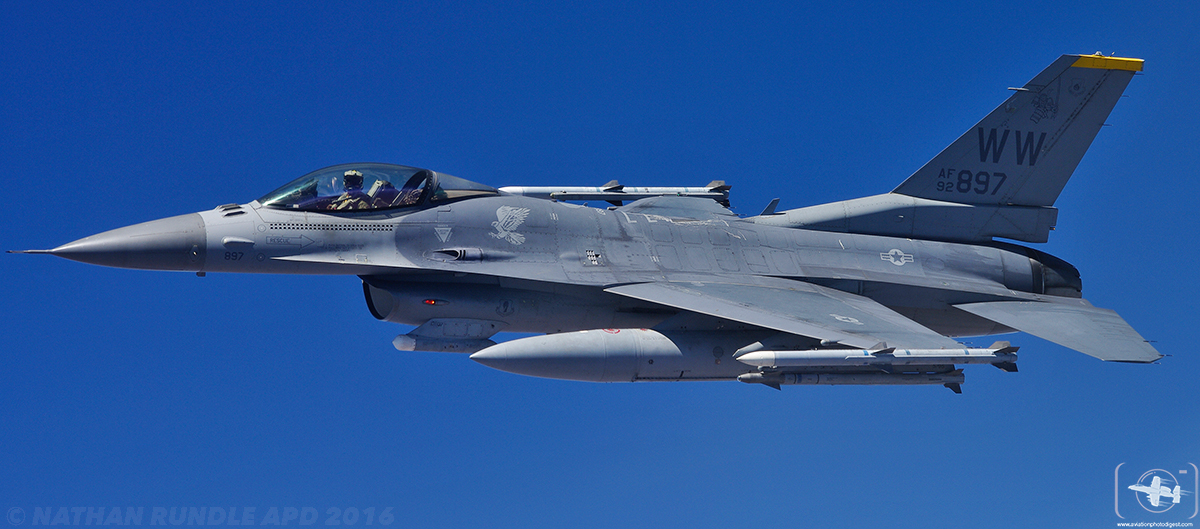
With an appropriate “WW” tail code, the 14th FS uses specialised aircraft, utilising a specific set of tactics and techniques, referred to as a “Wild Weasel”. Wild Weasel is a term that dates back to the Vietnam War used for USAF aircraft (and its tactics and techniques) designed for the SEAD role. Beginning with the F-100 Super Sabre to today’s F-16 Viper, the USAF “Wild Weasel” taking on the SEAD role has been an important component in modern joint combat operations.
In brief, the task of a Wild Weasel aircraft in the past was to bait anti-aircraft defences into targeting it with their radars, whereupon the radar waves are traced back to their source allowing the Weasel or its teammates to precisely target it for destruction. Now in the information age the F-16CM used by the 14th FS are now able to work with specialised ground forces or Intelligence Surveillance Reconnaissance (ISR) aircraft to get a full scope on the contested battle space area and to seek and destroy targets which could target a destroy coalition aircraft.

Photo credit: CPL David Gibbs / ADF image
The trip undertaken, getting from Misawa heading Downunder, was a new experience for the Samurais, where for the first time a USAF KC-10A/ KC-135R equipped Aerial Refuelling Squadron would not deploy with the unit to support the fourteen F-16 Vipers.
For the first time, in partnership with the Royal Australian Air Force (RAAF) a KC-30A MRTT (Tanker) from 33 Squadron based at RAAF Base Amberley in Queensland, on July 19, flew non- stop with six F-16Cs linking up with the 14th FS at Kadena AFB in Japan to drag Vipers from Kadena to RAAF Base Darwin in just a little over six hours.
RAAF Group Captain (GPCAPT) Adam Williams, Officer Commanding of No. 86 Wing with 33 Squadron which is under the 86 Wings umbrella, said it was the first time that a RAAF air-to-air refuelling tanker deployed in support of U.S. Air Force fighter aircraft to Australia.
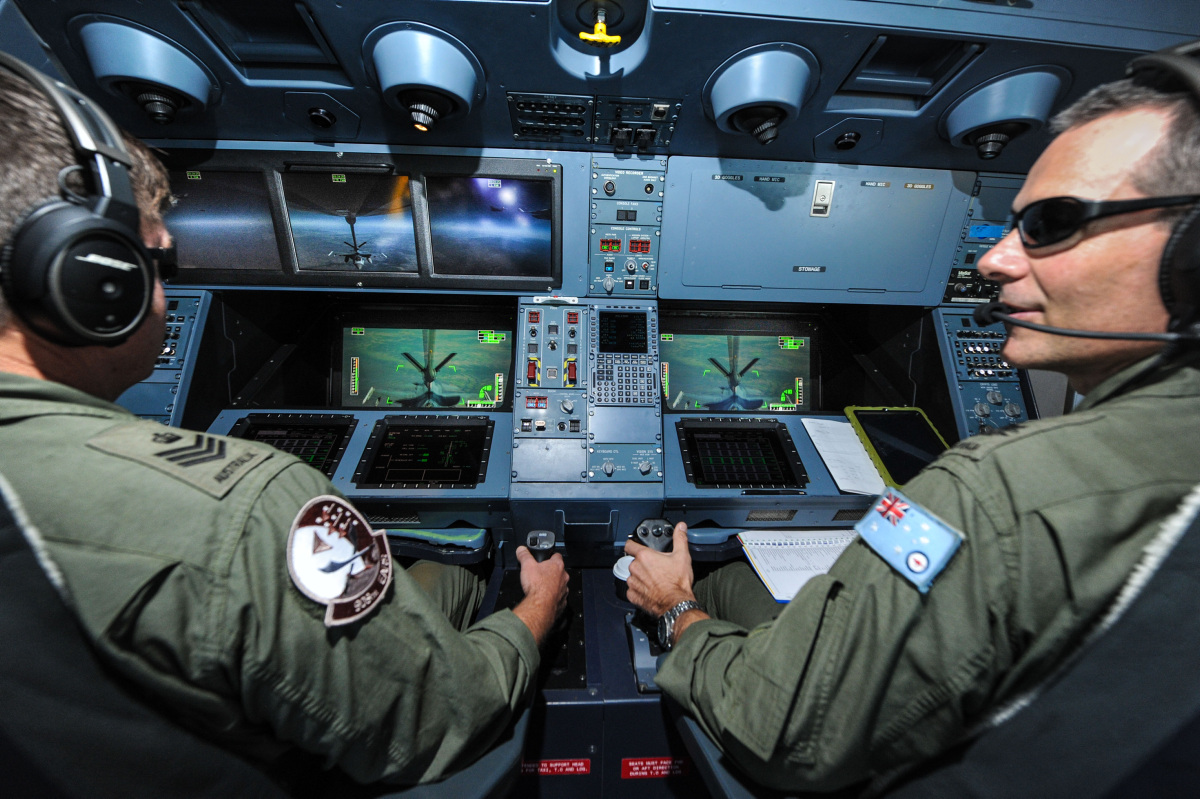
No. 33 Squadron Air Refuelling Operators, Warrant Officer Steven Foster (right) and Flight Sergeant Colin Weekes, conduct boom refuelling of a United States Air Force F-16C. Photo credit: CPL GLEN MCCARTHY / ADF IMAGE
He said, “The KC-30A conducted 35 contacts with the six F-16Cs, transferring a total of 55.8 tonnes of fuel to the F-16Cs, or nearly 70,000 litres,” GPCAPT Williams goes on to say. “The air- to-air refuelling boom on the KC-30A performed well, with no significant issues. Despite some periods of moderate turbulence en route, which is to be expected when flying around the area near the equator, they completed the 5,400-kilometre journey safely.”
Return trips saw the KC-30A deploy a total of 14 F-16CM’s in the week prior to Pitch Black 2016. APD had the privilege of speaking with the Commander of the 14th FS, Lieutenant Colonel (LtCol) Mark “Chainsaw” Heusinkveld a native of Texas, in which he gave insight to this occasion marking the first time a operational F-16 Viper squadron had refuelled from a RAAF KC-30 outside the test environment, which was conducted at Edwards AFB in California earlier in the year. He said that the support provided by the KC-30A was a testament to the interoperability between partner nations at Pitch Black 2016.
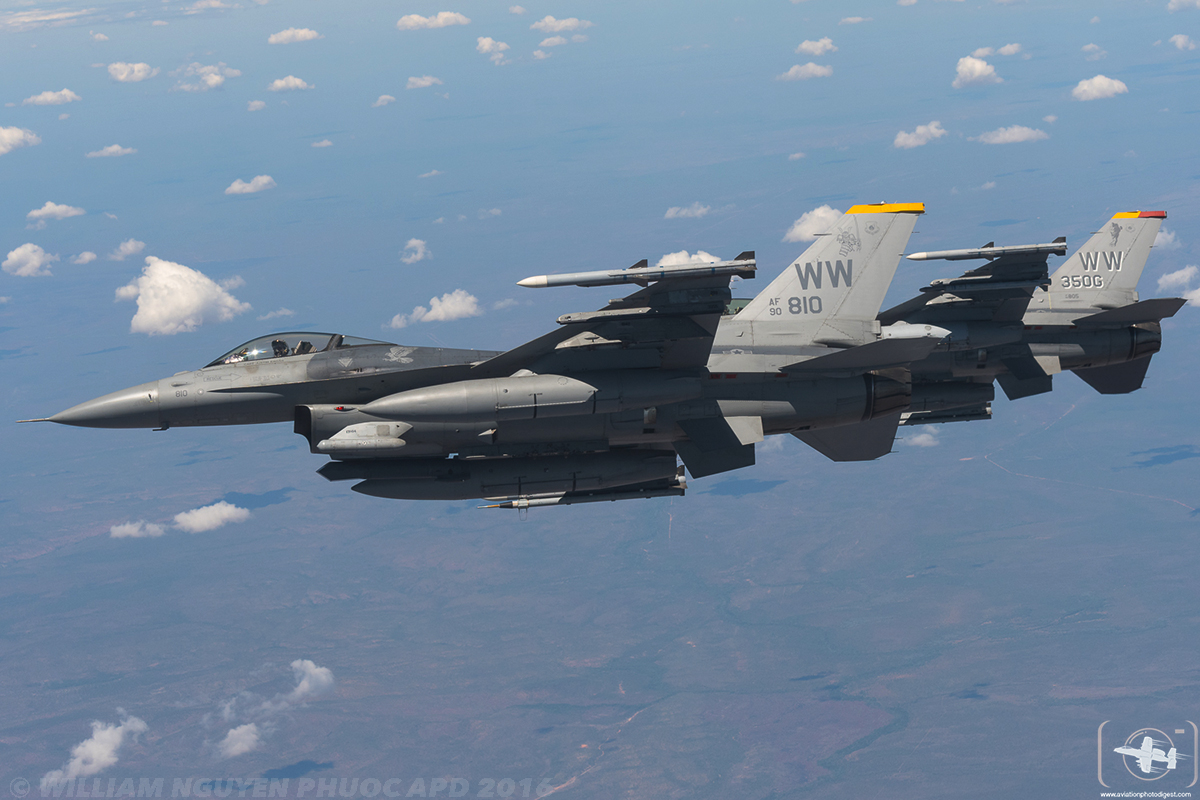
“The refuelling not only provides mutually beneficial training between United States and Australian air forces, but also demonstrates the close military ties between our nations, It’s always advantageous when training opportunities like these present themselves.” Lt.Col Heusinkveld added. “This strengthening of our multilateral relationship will only continue as we train and improve our alliance capabilities.”
He goes on, “ It was a great experience for us, we are used to our, we can say old tankers the KC-10 and KC-135 tankers. That brand new, looks new, smells new, brand new paint job that looks perfect, the KC-30 was a highlight to fly along side. We brought 14 jets 175 personnel 24 of which are pilots with all our support gear, and I will add that we would not have got here in the timeframe needed if we didn’t have the KC-30 to utilise in getting to Darwin. We only used the one tanker so how it worked was the tanker flew from Darwin to Okinawa (Kadena AFB) spent the night then dragged seven F-16’s to Darwin then spent the night, then the next day they flew back to Okinawa picked up the other seven F-16’s then dragged them to Darwin. So that was over a period of three days.”
To refuel the F-16Cs, the RAAF KC-30A used its 18-metre-long Advanced Refuelling Boom System (ARBS), controlled by an Air Refuelling Operator at his station located in the KC-30A’s flight deck through the use of fly-by-wire controls and 3D Glasses. As each Viper flew in close formation behind the KC-30A, the ARBS would ‘plug’ into a fuel receptacle on the F-16C and commence refuelling. GPCAPT Williams said, “This deployment is a significant milestone for the RAAF’s KC-30A, as it demonstrates our ability to refuel international F-16s within the Asia Pacific region as well as during operations further abroad.” He goes on, “This will further reinforce the close bonds between our Air Forces in the field of air-to-air refuelling.”
Exercise Pitch Black offers something that a lot of other exercises around the world if any cannot, and that is room to move. To illustrate the Bradshaw Field Training Area (BFTA) is a designated training area in which the Australian Army and United States Marine Corps MRF-D (Marine Rotational Force-Darwin) among other units, trains in simulated exercises, that training area is around the size of the state of Connecticut.

The Delamere Air Weapons range which is around 1/3 in size to the BFTA but is still around an impressive 810 square miles (2,110 square kilometres) in size with an unrestricted airspace up to 60,000 feet.
With over 110 aircraft participating in the exercise and with no restrictions, such as that at exercise Red Flag where there are particular corridors to fly through before reaching the exercise area, what Pitch Black offers in just sheer size to conduct training is unparalleled, it combines these training areas to which large scale manoeuvres either in the air or on the ground can be accomplished with ease.

Lt.Col Heusinkveld explains that this is a very special and unique experience for the Samurais to train in, saying that usually in other parts of the world where training is undertaken there are a lot of imposed restrictions such as back in Japan as aircraft usually operates in a fairly conflicted airspace and as there is a lot of ocean opposed to land, which USAF operate in which is over built up areas when flying over land.
He states, “Well it’s rare for us to have a training opportunity like this in the Pacific, the fact that we can operate under essentially very few restrictions over land is a rare opportunity for us. The majority of the time we will have imposed air speed restrictions and limited areas where we can go super-sonic, we’ll have low altitude restrictions, and we’ll have a fairly confined airspace to work in. Here in the Top End of Australia we don’t have that, over in Alaska the USAF have a pretty good facility out of Elision Air Force Base, but here as far as the size of the airspace and where we can operate to the full, rivals that of Alaska, Which for us is pretty special.”
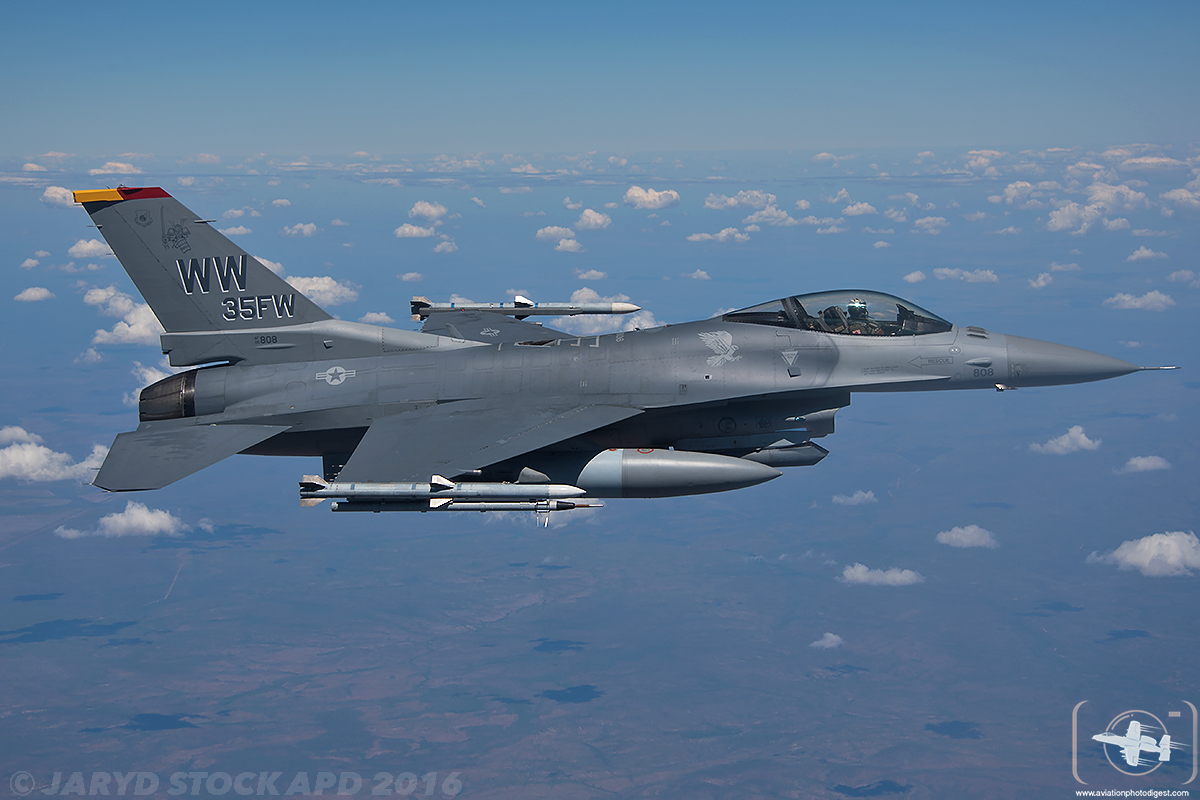
The first week for the exercise a familiarisation of the area was needed for visiting units to get accustomed to various areas and airspace they would be operating in. The Samurais were on the front foot in undertaking these familiarisation flights.
Lt.Col Heusinkveld told us what was undertaken by the squadron and how this helped them in preparing for the second week of the exercise where operations were ramped-up.
The Lt.Col says, “Well firstly we received a local area orientation brief from the Royal Australian Air Force pilots. We went over procedures with them and we also went over airspace restrictions and ways to execute a departure out of Darwin to get to the training airspace, and ways to execute a recovery back to Darwin and they also highlighted some of the differences on what we are used to in the U.S.”
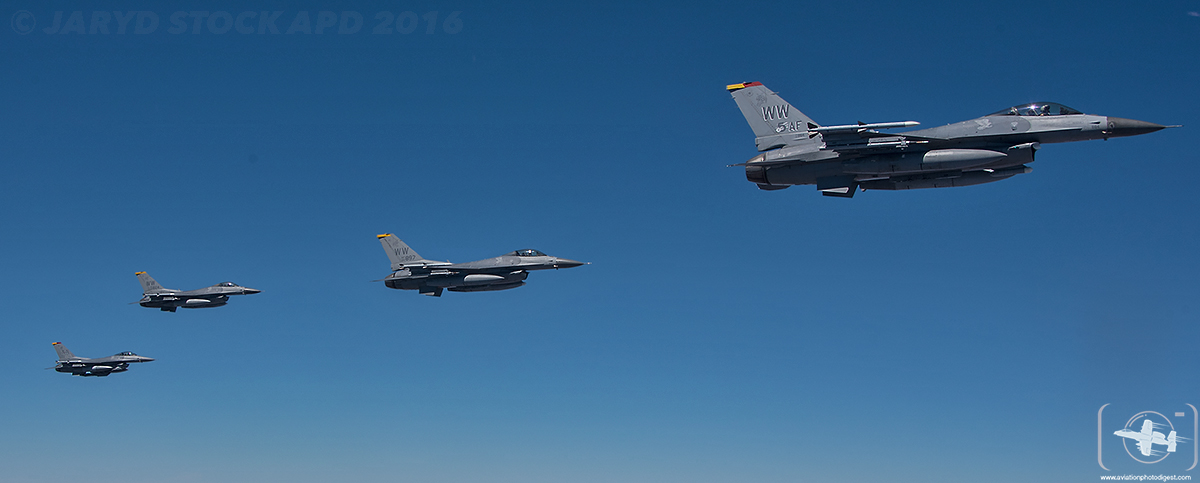
“We then began a Crawl, Walk, Run approach as that is what Pitch Black commanders had organised to use. So during the first week we were in a crawl phase. We were executing small force exercises we were doing two aircraft verse four, and then reverse, and then we were split off into smaller groups and working together in that. And that gives us a variety of things, it allows us to get warmed up it lets us get used to the capabilities of the airspace and the aircraft and it helps us to talk to one another especially when we are in the air and talking to international participants.”
“Even though we speak English we often find that the Aussies terminology and the way they speak is different to how we would, so using that week working together as that has been something we have had to work on, having that week has been great to work on those particulars and especially working in with the Air Traffic Control tower. The fact Darwin airport is a City airport not a militarised airport which is different for us in fact has been great for us, they have been extremely helpful and as we have brought so many aircraft into Darwin they have been extremely patient with us, much more patient than I would’ve been when having a visiting military unit at my airport.”
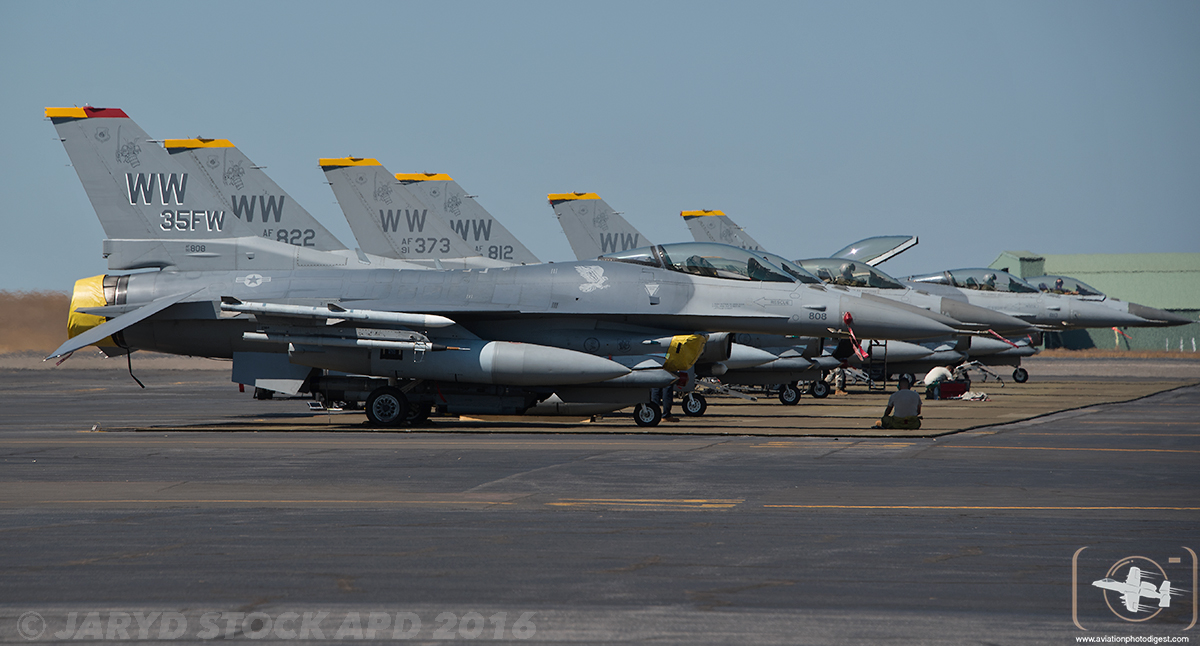
The opportunity for various nations to train together for a period of time and in such a big exercise is something that the Lt.Col was very appreciative about as that is the purpose for this exercise.
Lt.Col Heusinkveld states on this uniqueness of seeing capabilities that the 14th FS don’t usually train with.
He says, “We don’t get to train with the people from either the Royal Thai Air Force, or don’t get to train with the TNI-AU the Indonesians very often. So to have them in the Pacific and training with them is a very big deal for us. Combine them with the Australian’s and the Singaporean’s and be able to train with all of them in the Pacific theatre in a place where the USAF isn’t hosting and it’s our great partner the Aussie’s that are hosting is a great opportunity to build a great coalition team and to understand each others capabilities and then integrate these capabilities, which is the whole reason why we are here.”
Suppressing the Threat
The 14th FS role in Pitch Black is conducting roles almost on behalf of and apart of the Blue force that was conducting strike against simulated targets on the ground and in the air against the opposing Red Force basing out of RAAF Base Tindal. The primary role for the unit was almost entirely devoted to suppression of enemy air defences. The role of the ‘Samurais’ during Pitch Black and any other exercise or when called upon to enter a conflict is the SEAD role which is protecting other strike or other mission aircraft against threats on the ground or in the air to allow those coalition aircraft get to their designated targets unimpeded.
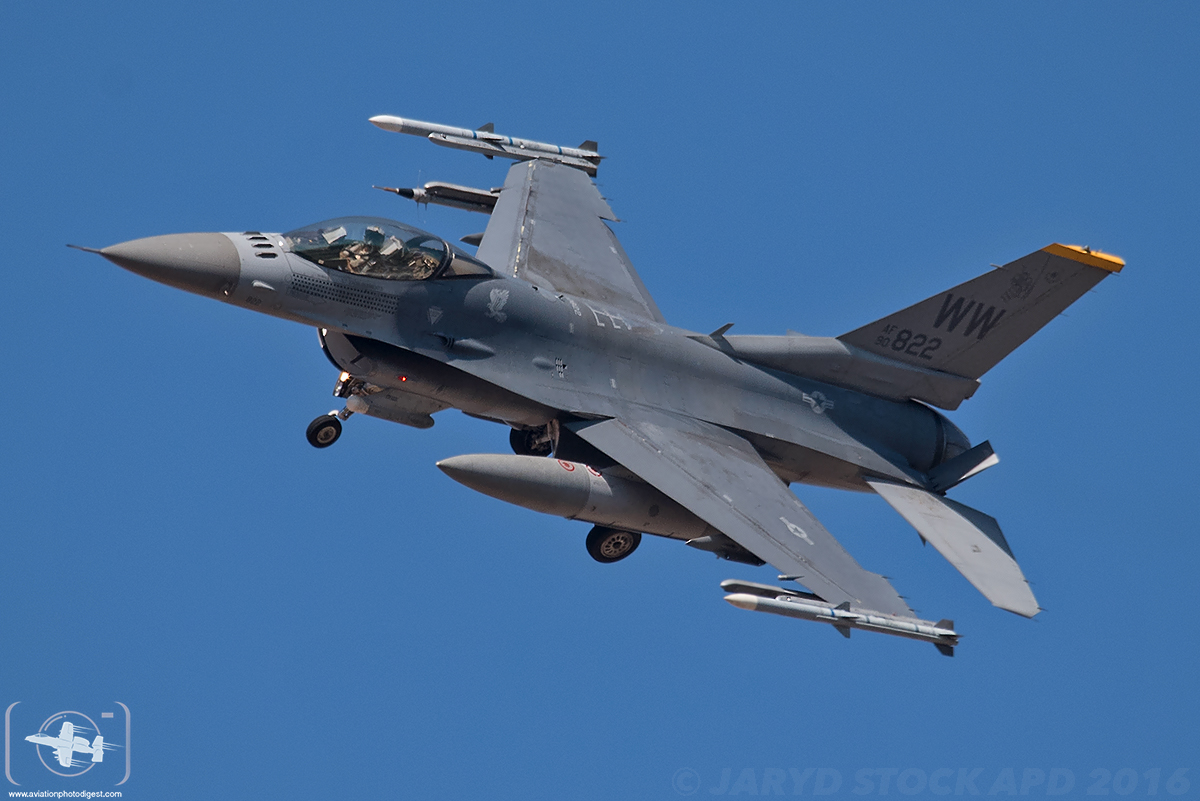
Lt.Col Heusinkveld explains on the specific role undertaken by the Samurais and what weapons would be employed against such threats if they were deployed in a operation in real time conflict.
“We are a unique support asset for coalition aircraft and or ground forces, we are primarily training in Pitch Black to conduct that SEAD role,” He says. “Our secondary role is defensive counter air, and that is something next we are also considered to do, wether it be a point defence or area defence so an example is we have a friendly territory that we want to protect from attack by enemy forces and we will use our Air to Air missiles. Its a very difficult role it’s a very difficult mission we undertake especially in a single seat fighter but we train simultaneously in the strike against enemy ground targets and against the enemy air threats as well, but where we can if we can we’ll train for the SEAD role, but thats the level we are training to and the level we strive after to remain combat ready.” Stated the Lt.Col.
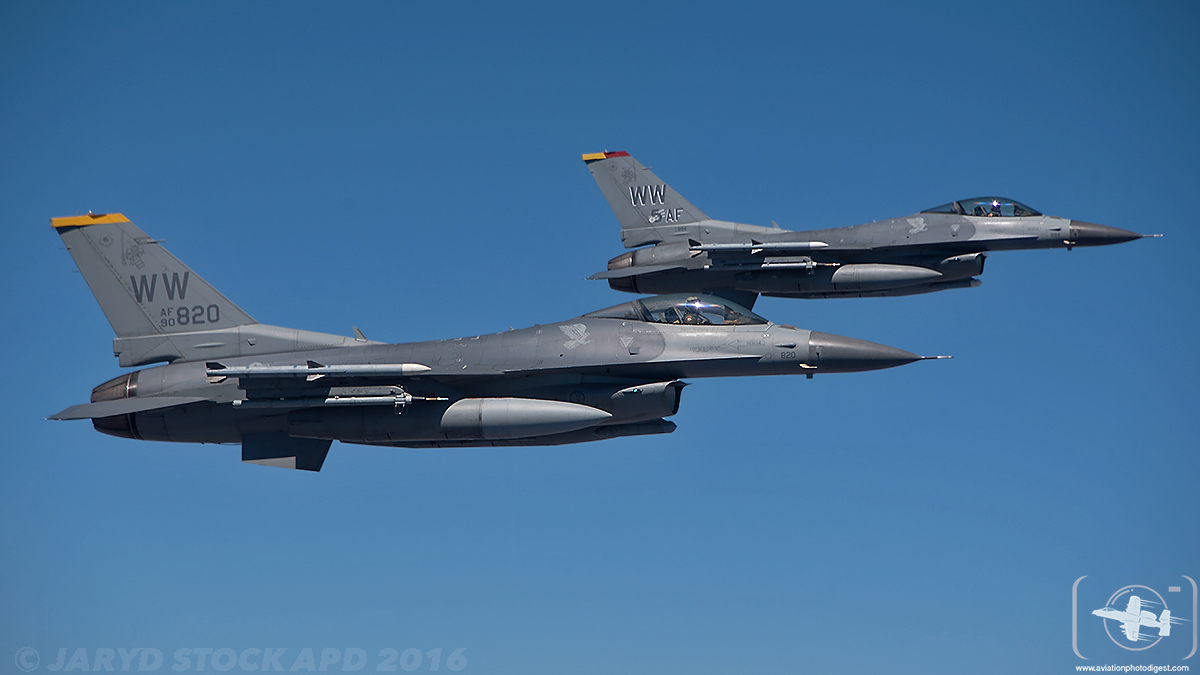
An example of interoperability between the Australians and the 14th FS was the unique strike packages formed during the exercise. When the SEAD role was being performed by the ‘Samurais’ RAAF’s ‘Fighting First’ number 1 Squadron equipped with F/A-18F Super Hornets would provide a protection or top cover for the 14th FS whilst they were carrying out strikes against designated targets.
“Usually in Pitch Black it’s been other assets that have been providing that top cover, we can do it if we wanted too, we are trained in adequately in both strike and air to air defence but we want to concentrate on that of our primary role during the exercise which is again the SEAD role. The Super Hornet from 1 Squadron has been unbelievable in providing that cover for us during Pitch Black, they can do some pretty incredible things with regard targeting, in the air to air realm. So for most of the times while we are performing SEAD they are protecting us with that top cover against the air to air threat,” The Lt.Col says.
For the threats simulated in Pitch Black the Lt.Col explains, “We are also training against a simulated threat for example, the Republic of Singapore Air Force have brought over Hawk battery on the ground and situated it in the training areas, so we’ve been able to simulate targeting that and combat against those systems. We are also training against single digit Surface to Air Missile (SAM) SA-2’s and SA-3’s threats that are scattered around the training areas.”
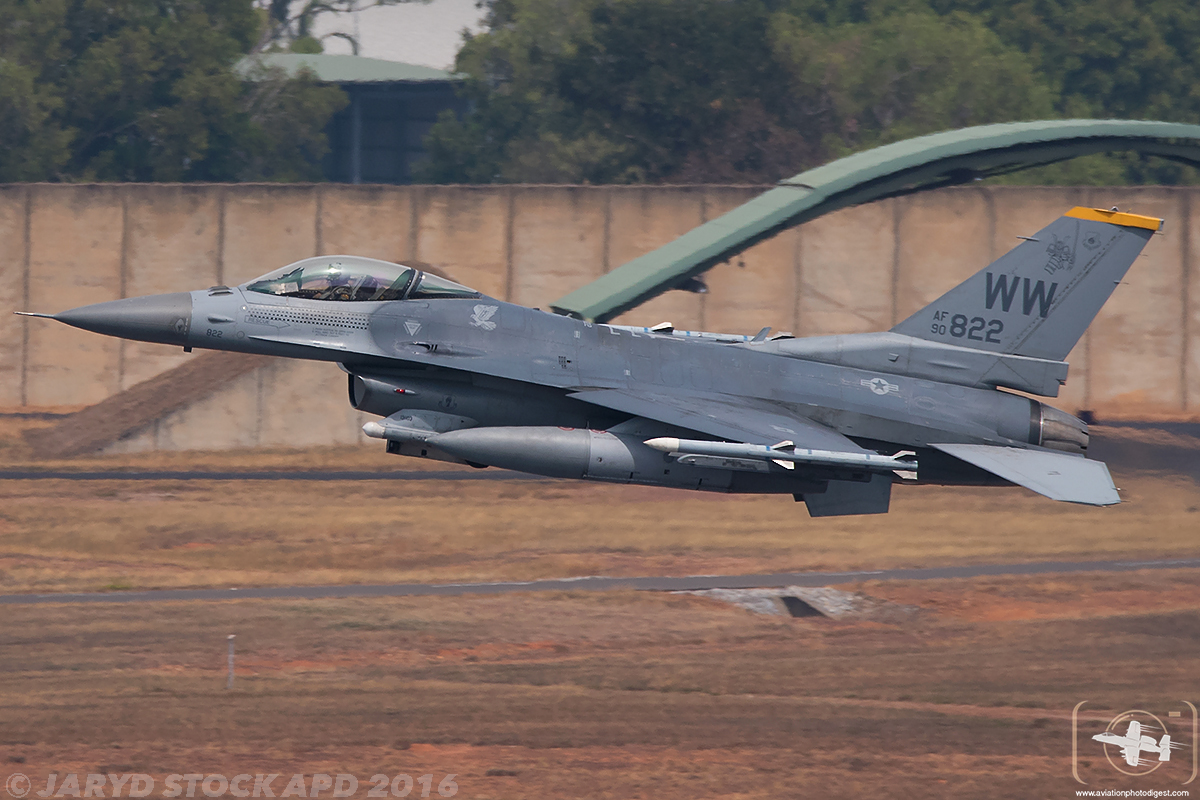
During real time operations the F-16CM uses various weapons and targeting equipment. The weapon of choice used by the 14th FS is the AGM-88 High Speed Anti-Radiation (HARM) missile. It’s a supersonic air to ground missile designed to seek and destroy enemy radar-equipped air defence systems. This includes emissions from surface-to-air missiles, radar gathered anti-aircraft artillery and any type of radar or electronic waveform. It’s equipped with an internal and GPS guidance system that homes in on any radar emissions. The HARM is built to impact a target to give it a shock and aww not fully destroy it, the pilots from the 14th FS expect that at some stage that threat will keep on persisting until fully destroyed. In order to do that then the 14th FS engage in Destructive SEAD, which is that is taking a weapon of a higher class whether it be a 500 pound bomb whether it be GPS aided or laser guided and using that to destroy and enemy SAM system.
Sophisticated targeting is also as important as the weapons employed on the F-16CM that is operated in the SEAD role. With the aircraft a Harm Targeting System (HTS) which is a sensor that hangs on the nose of the F-16, that allows the pilots to receive the electrons coming from a surface to air missile site, and then process that information to gather a designated area to target and employ which weapon is useful in performing a strike against that site.
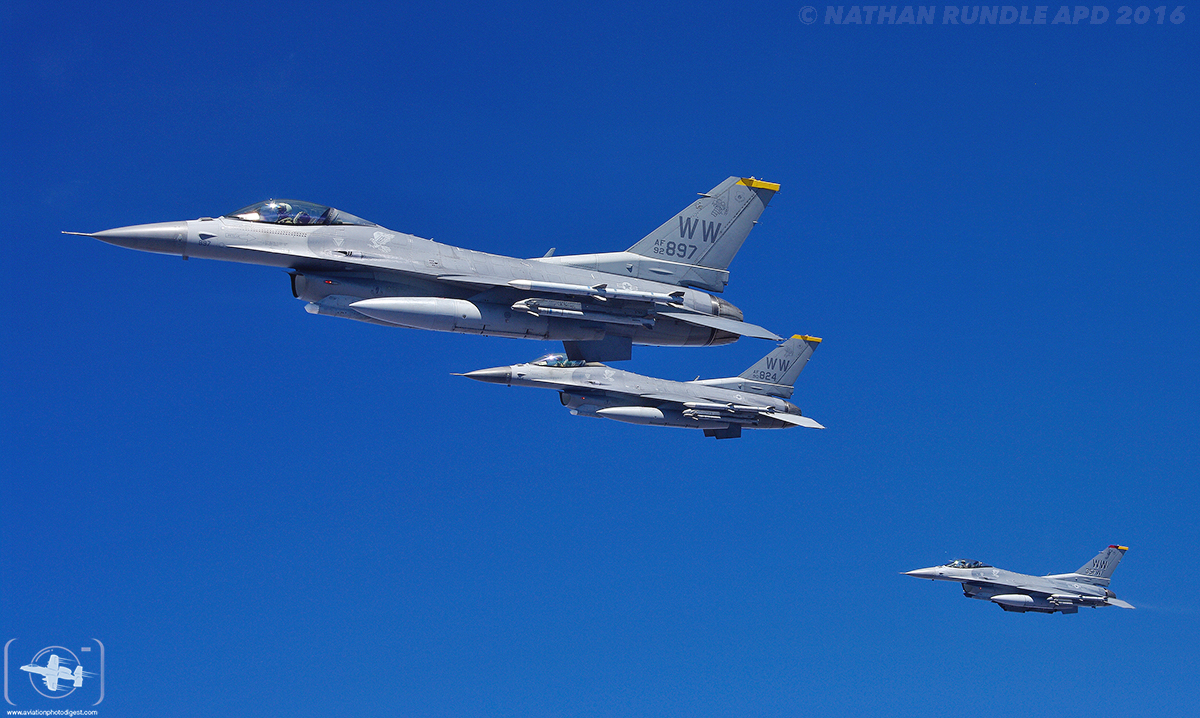
When performing that destructive SEAD role the F-16 will employ an advanced targeting pod usually held on a hard-point underneath chin on the air intake of the F-16. This pod is usually the AAQ-33/SE Sniper Pod, the sniper pod gives an unrivalled capability as it gives improved algorithms enabling the pilot to engage moving targets. It’s two-way data link can share video coordinates imagery with a Joint Terminal Controller (JTAC) who has Link-16 compatible ROVER terminal which is a Remote Operated Video Enhanced Receiver. This enables the pilot the ability to receive and view imagery annotated with target details and co-ordinates from the JTAC.
The Way of the Samurai
Pitch Black has been an invaluable exercise for participating units to get a look at how the United States Air Force and in particular the 14th Fighter Squadron prepare, plan and conduct the SEAD role.
The Samurai were a social class that were treated as warriors cast apart of the Japanese culture. Samurai translated into the english language refers to or is basically translated to “those who serve” or “to Serve and Attend”.
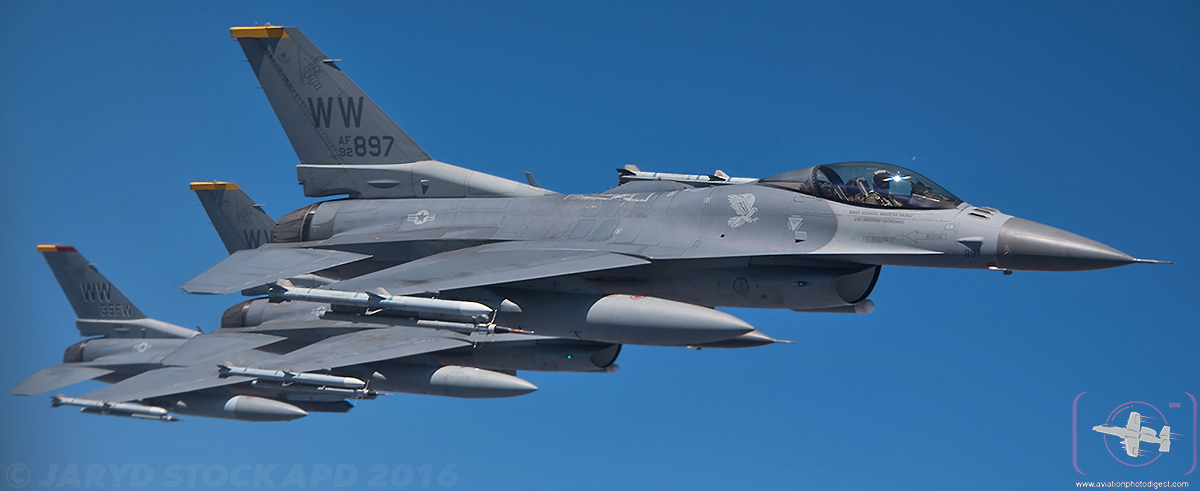
The United States Air Force Pacific Forces 14th Fighter Squadron ‘Samurais’ are fulfilling that translation in todays modern world. They train in a unique role which one could say is a more dangerous and unpredictable role within the various elements that make up the force structure within the USAF. Those members of the 14th FS carry on that unique privilege of being called the Wild Weasels a unit that is the first in to protect others, or as the translation of the word Samurai suggests “to Serve and Attend” in providing a protection for those who need it. They give up their time to serve their nation and people to conduct quite possibly one of the most dangerous roles within the USAF, all in order to protect those that are their fellow countrymen and allies. Allowing them to go home at night to their families, even those that are deployed away from theirs in the Top End of Australia.
APD would like to thank:
USAF Lt.Col Mark ‘Chainsaw’ Heusinkveld. RAAF SQNLDR Skye Smith. RAAF SQNLDR Gavin Briggs. RAAF FLTLT Darren Carruthers.
Click on an image below to page or swipe through the gallery:
Jaryd Stock is based in Sydney Australia. He has been a die-hard aviation enthusiast from a young age when he was chauffeured around by his father to various airshows and airports around Australia. At his first Airshow he witnessed the awesomeness of a General Dynamics F-111C and immediately fell in love with aviation.
Jaryd picked up a camera at a young age and has never looked back. He now combines photography and writing to highlight “Downunder” aviation; especially U.S. DoD units. Jaryd uses Nikon cameras and lenses.


